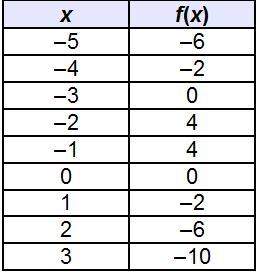Based on the table, which best predicts the end behavior of the graph of f(x)?
as x → ∞...

Mathematics, 11.11.2019 18:31 fredbear373
Based on the table, which best predicts the end behavior of the graph of f(x)?
as x → ∞, f(x) → ∞, and as x → –∞, f(x) → ∞.
as x → ∞, f(x) → ∞, and as x → –∞, f(x) → –∞.
as x → ∞, f(x) → –∞, and as x → –∞, f(x) → ∞.
as x → ∞, f(x) → –∞, and as x → –∞, f(x) → –∞.


Answers: 3


Another question on Mathematics

Mathematics, 21.06.2019 20:50
In the diagram, gef and hef are congruent. what is the value of x
Answers: 1

Mathematics, 21.06.2019 23:00
Unaware that 35% of the 10000 voters in his constituency support him, a politician decides to estimate his political strength. a sample of 200 voters shows that 40% support him. a. what is the population? b. what is the parameter of interest? state its value c. what is the statistics of the interest? state its value d. compare your answers in (b) and (c) is it surprising they are different? if the politician were to sample another 200 voters, which of the two numbers would most likely change? explain
Answers: 2

Mathematics, 21.06.2019 23:20
For which pairs of functions is (f•g)(x)=12x? f(x)=3-4x and g(x)=16x-3 f(x)=6x2 and g(x)= 2/x f(x)= and g(x) = 144x f(x)=4x and g(x) =3x
Answers: 1

Mathematics, 21.06.2019 23:40
Cos^2x+cos^2(120°+x)+cos^2(120°-x)i need this asap. pls me
Answers: 1
You know the right answer?
Questions





Biology, 16.04.2020 04:44


Computers and Technology, 16.04.2020 04:44

Health, 16.04.2020 04:44







Social Studies, 16.04.2020 04:44




Mathematics, 16.04.2020 04:44



